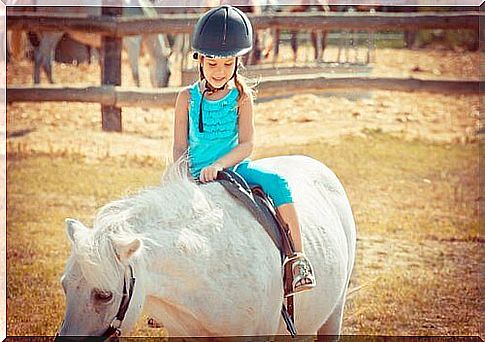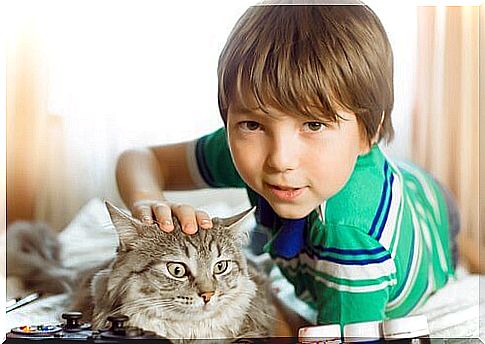How Can Therapy Animals Help Children? – Being Parents

Assisted therapy with animals or zootherapy offers the use of different species in rehabilitation, psychoeducational, therapeutic and integrative activities. While it also helps adults, therapy animals are especially beneficial for children.
Benefits of therapy animals for children
Medical science has progressed and has fortunately recognized the positive impact of pet therapy on the health of children. Currently, therapy animals are used in many exercises for different purposes. Depending on the species used and the mode of interaction, a specific stimulation is obtained.
We cannot really speak of advantages or predetermined indications in the field of pet therapy. Each child should be supervised by a specialized professional to define the guiding principles of his treatment.
However, we have summarized the main benefits of therapy with animals below. We make the difference according to the different species more frequently used.
Assisted therapy with dogs
Dogs are probably the most versatile therapy animals we know of. Their intelligence, their sensitivity and their dedication to the human being allow them to collaborate in many activities of integration, rehabilitation and psycho-pedagogy.
On the one hand, guide dogs offer visually impaired children a better quality of life. With their “orientation”, these little ones gain the freedom of movement and independence that will be essential in their adult life. They also allow their integration into a more active and healthy social life.
Pet therapy is used more and more in psycho-educational methodologies. Dogs have also become friends of learning. This type of initiatives aimed at stimulating the cognitive, emotional and social children and adolescents with delayed mental, autism spectrum disorders or Down syndrome.
Therapy dogs play a sensitive role with the elderly and patients with severe or terminal illnesses. Many hospitals and geriatric centers have incorporated assisted therapy with dogs to create a more positive environment. It also contributes to a better state of mind or to stimulate the recovery of his patients.
Equine therapy and its many advantages
Today, equine therapy is surely the most recognized activity among the different assisted therapies with animals. Equines are seen as a “living and complete tool” for the rehabilitation of children and adolescents. With their help, we see progress being made at cognitive, social, emotional and neuromuscular levels.

However , horses were already recognized as therapy animals since ancient Greece. They helped with rehabilitation after accidents. They also help control the symptoms of diseases physical and mental.
Equine therapy has also played a central role in relieving pain caused by degenerative diseases. We can name as examples arthritis and osteoarthritis.
Lizards as therapy animals
Many children adopt iguanas and small lizards as exotic animals. Thus, pet therapy has studied and used their positive impact on the health of young people.
Despite their peculiar appearance, these reptiles are very effective in stimulating the cognitive and social capacities of our young.
Iguanas and lizards also have a great advantage over dogs and horses. They take up less space and require simpler care. In addition, since they are hairless, they are highly recommended as therapy animals for children and adults with allergies.
Therapies for children with small rodents
Children are often drawn to the soft and delicate appearance of small rodents. This is the case with hamsters and rabbits.
They are animals that do not generate fear due to their size or reduced physical power. They demonstrate balanced behavior. These animals are also easy to maintain and adapt to small environments. They make a great first pet for children.
Pet therapy specialists agree on the social and emotional benefits of coexisting children with autism with these little rodents.

Cats as therapy animals
One must take into account the positive impact of therapies with cats for older adults. Contact with the hairs of felines would be able to stimulate cognitive ability and memory.
Currently, pet therapy is investigating whether this effect of treatments could also benefit more children in their learning and social integration.
Animals in therapy receive the proper education and care to perform their function. Assisted therapy is specially designed to promote a positive experience for both patient and animal.









